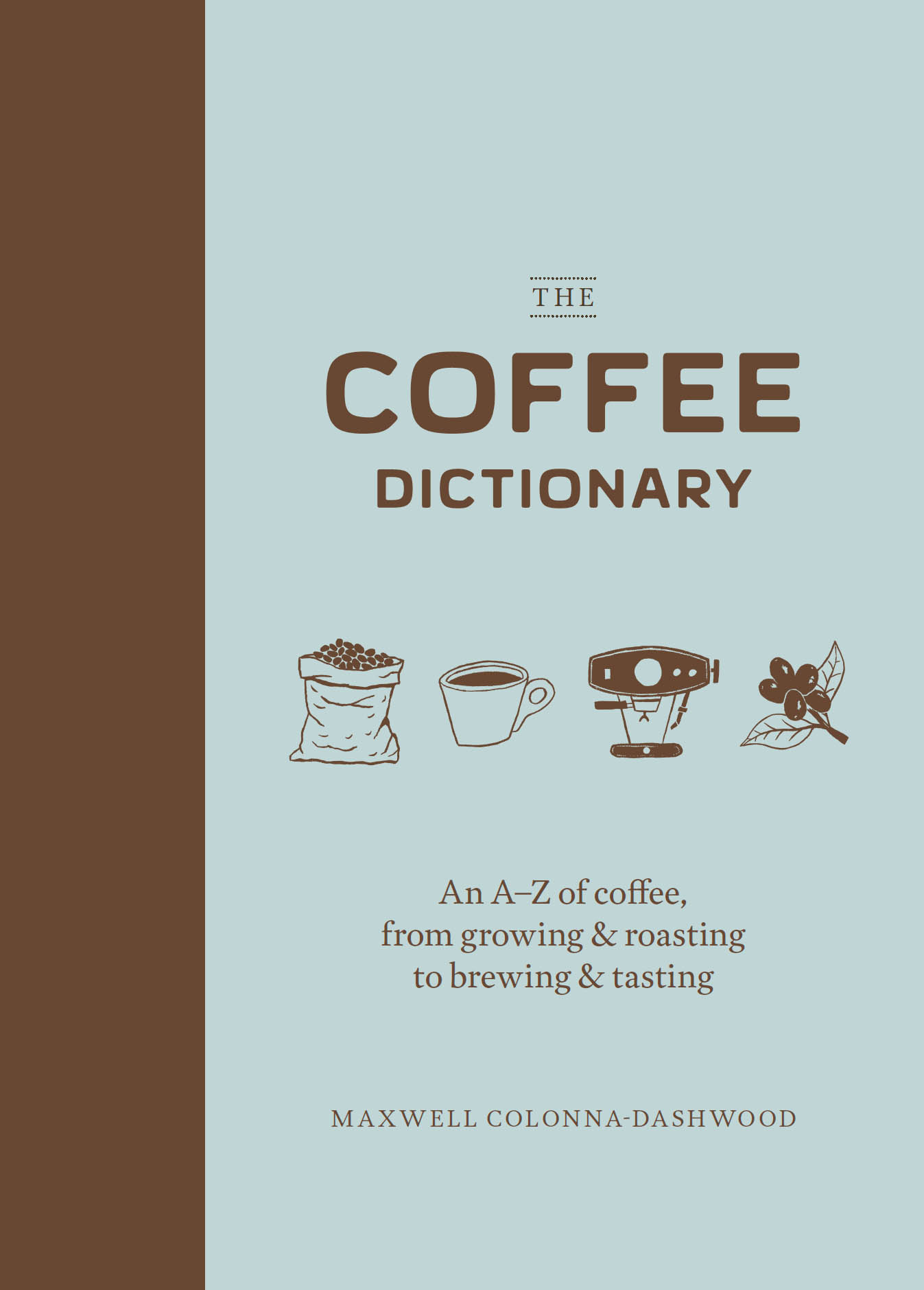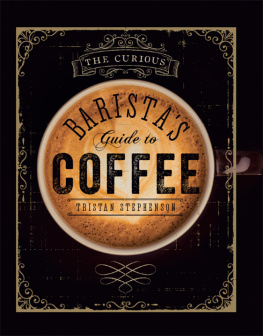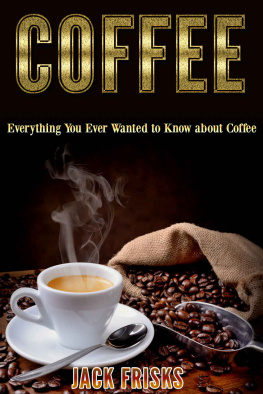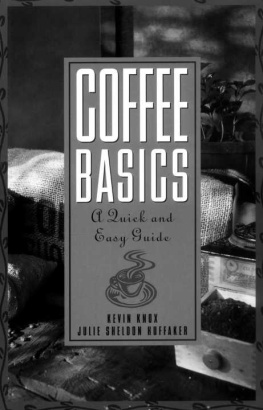



For Lesley
First published in the United States in 2017 by Chronicle Books LLC.
First published in the United Kingdom in 2017 by Octopus Publishing Group.
Text copyright 2017 by Maxwell Colonna-Dashwood.
Illustrations copyright 2017 by Tom Jay.
All rights reserved. No part of this book may be reproduced in any form without written permission from the publisher.
ISBN 978-1-4521-6678-0 (epub, mobi)
Library of Congress Cataloging-in-Publication Data available.
ISBN 978-1-4521-6665-0 (hc)
Chronicle books and gifts are available at special quantity discounts to corporations, professional associations, literacy programs, and other organizations. For details and discount information, please contact our premiums department at or at 1-800-759-0190.
Chronicle Books LLC
680 Second Street
San Francisco, California 94107
www.chroniclebooks.com
Aerobie and Aeropress are registered trademarks of Aerobie, Inc.; Brita is a registered trademark of Brita, LP.; Chemex is a registered trademark of the International Housewares Corporation.; GrainPro Cocoons is a registered trademark of GrainPro, Inc.; Le Nez du Caf is a registered trademark of ditions Jean Lenoir, SARL.; Nespresso is a registered trademark of Socit des Produits Nestl S.A.
Contents

Introduction
It seems that there are two ways to fall in love with coffee. Either you start drinking coffee from an early age and develop a relationship with it over time, becoming more and more engrossed with its culinary and cultural potential; or you have almost no interest in coffee and then have an epiphany, a cup of coffee that changes everything. This is followed by disbelief and confusion coupled with excitementand then you never look back.
The latter scenario applies to me. I had almost no interest in coffee. I drew portraits and painted things as my first real vocation. Like many an artist, I worked hospitality jobs on the side and over time, I realized my passion lies there. I met my wife and we thought we would do a bit of travelling. After six months in India, we ended up in Melbourne, Australia, with a work visa.
Unbeknown to us at the time, the city of Melbourne was home both to a vibrant caf scene and to an equally impressive coffee culture. I got a job in the city in a caf downtown and it wasnt long before I was discussing coffee with many of the regulars. It was they who brought the subject up, and to be honest, I was a bit lost. Sure, I was finding it an interesting challenge to master this difficult latte art thing, but quite why coffee was a complex culinary phenomenon was not obvious to me. One of the regulars could see I was intrigued, though, and suggested that on my lunch break I pop up the road to a small caf called Brother Baba Bhudan. I wandered up, and a lady with a coffee plant tattoo crawling up her leg asked me whether I would like to try the single-origin coffee. She said it was from Kenya and had notes of strawberry and vanilla. I must be honest I was sceptical. I had no idea what coffee coming from Kenya meant (why would it be different from any other coffee?) and the flavour notes, I thought, would be lost on me.
Then I stepped outside onto the pavement and tasted the espresso. There it was the epiphany. I simply could not believe how incredible this little beverage was. It instantly changed how I saw coffee and its potential. Not only did I get the flavour notes, it was one of the most incredible things I had ever tasted. To say that I enjoyed it is a huge understatement. My mind started going crazy. Why have I only just found out that coffee could taste and be like this? Not just I but my wife, too, bubbled over with excitement and we knew immediately that we wanted to work in coffee. Next day, I changed jobs and began the ongoing and endless pursuit of chasing and understanding coffee. We used our time in Melbourne to visit roasters and cafs and take courses with barista champions, before finally heading home.
Back in the UK we started an events company, moved to a new town to open a shop, dived into the world of competitive coffee, collaborated with scientists and espresso machine manufacturers, and continued to learn and explore coffee. The coffee world really is a rabbit hole.
For me, coffee has proved to be endlessly fascinating, engaging, and rewarding. Coffee is many different things for different people. This amazing drink is full of flavour, intrigue, history, and countless stories. With this dictionary, I am excited to explore and discover coffee with you.
Maxwell Colonna-Dashwood


A
Acidity | TASTING
You may have heard acidity being described positively as brightness and negatively as sourness. This is the thing about acidity: it is integral to a great cup of coffee, but it is also a broad term. There are good and bad acids where taste is concerned, and there are also compounds that from a scientific point of view are acidic, yet we wouldnt describe them as tasting acidic. Though there are many sources of acidity in coffee, it is only a mildly acidic beverage, with a pH of around 5, as compared to the pH2 of wine. Coffees grown at a higher altitude often showcase more structured, complex, and positive acidity. Coffees without such acidity can be described as tasting flat and uninteresting. Brightness lifts a coffee in your mouth and gives it structure. A lot of perceived sweetness can also be derived from, or elevated by, acidity.
SEE ALSO
Aeropress | BREWING
The name Aeropress is inspired by a high-tech frisbee called the Aerobie, which was invented by the same man Alan Adler. The Aerobie has set several world records for the furthest-thrown object; the Aeropress is instead designed to make the perfect brew. Alan is a self-taught inventor from the United States. The Aeropress houses the ground coffee and the water inside a syringe-like brewing chamber. Manual pressure applied by the user forces the brewed coffee through a multiholed lid that holds a custom-shaped filter paper. (Metal filter discs are also available.)
The Aeropress allows you to be very versatile with brewing. You can opt for fine grinds and strong brews, as the pressure generated allows the grounds to be separated from the brew to a degree that a gravity-fed filter method could not manage. You can also brew lighter, more elegant brews. There is even a World Aeropress Championship, which, at the time of writing, attracts contestants from fifty-one countries.
SEE ALSO

Next page














